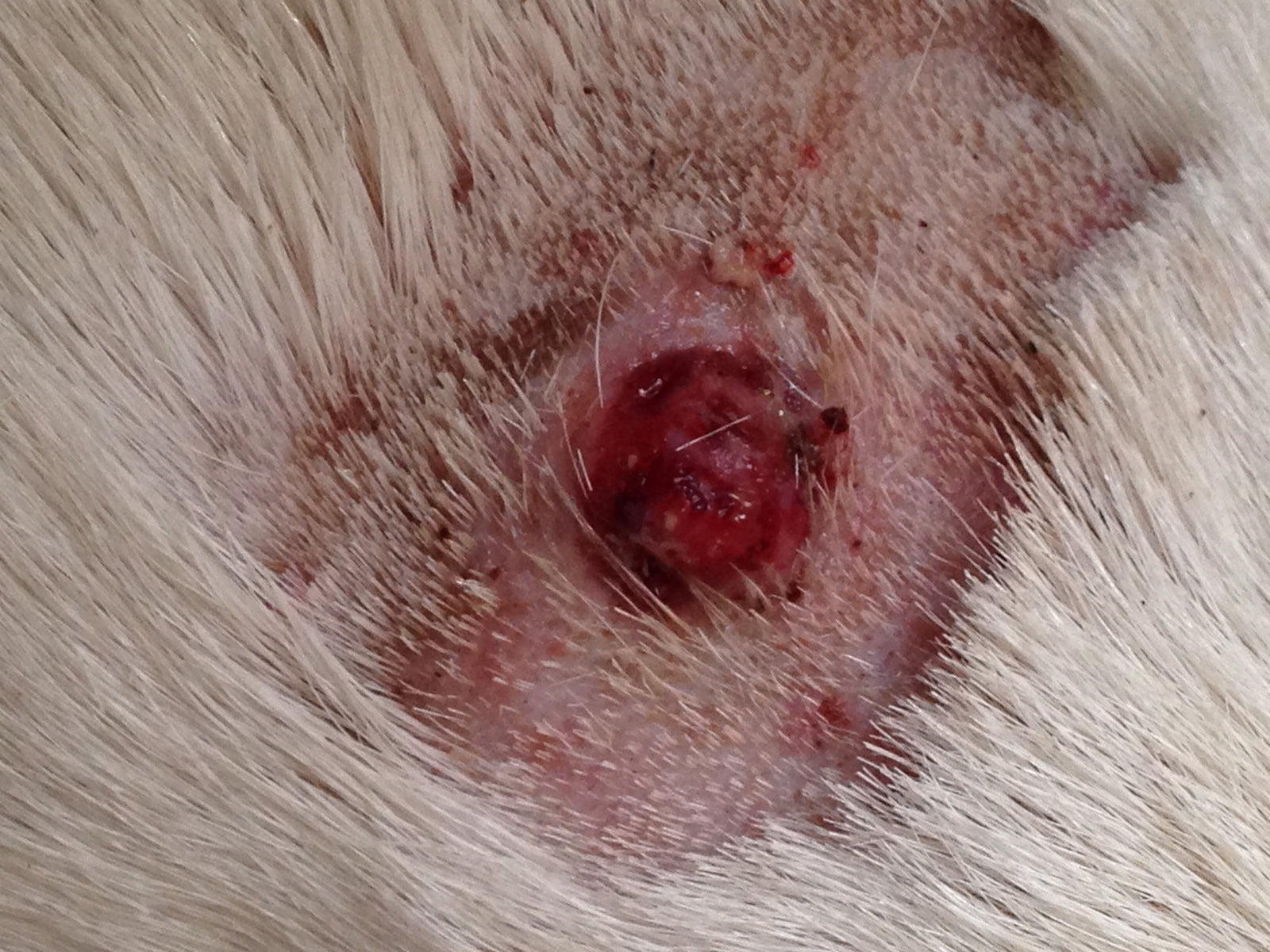By petting, grooming, and exercising your pet every day, you can actually be checking for warning signs of cancer. Here are some things to look for:
- Any new lumps, bumps, or sores. If you examine your pet daily, you will notice if a new lump or bump suddenly appears. While many lumps and bumps are benign, many are not. Have your veterinarian look at the lumps and perform a needle aspirate (obtaining a few cells with a needle and syringe). Cells should be examined under the microscope to determine whether they may be cancerous.
- Any change in old lumps, bumps, or sores. If a mass has been present for a long time, but suddenly starts to grow, becomes ulcerated, seems painful when touched, or the pet is paying a lot of attention to it, the mass may need immediate removal. Sores that just won't heal may be a sign of skin cancer.
- Constant licking at one toe or any other specific area. Pets try to heal themselves by licking areas that are painful or infected. Constant chewing or licking at only one toe can be a sign of a nail bed tumor. I have personally had two dogs where this was the case. Toe amputation can save the life of a beloved pet. Constant licking at the anal area could indicate an anal gland tumor. Pets with bladder tumors may lick in the groin area.
- Bloody discharge from anywhere, whether that is nose, mouth, penis, vulva, or rectum. Nose bleeds are not common in pets and should always be a warning sign to have the pet checked. Many pets with dental disease will have malodorous saliva, but pets with serious cancers in the mouth may have a lot of blood in the saliva. While blood in the urine or urinary openings may signify a urinary tract infection, it may also signify something worse, like a transitional cell carcinoma of the bladder or prostate cancer in males. Rectal bleeding may be associated with colitis, but can also occur with tumors in the bowel. Dark, black, tarry stools are an indication of bleeding higher in the digestive tract and may indicate a bleeding mass in the stomach or small intestine.
- Weight loss without a diet change. Some pet owners associate weight loss with aging changes. However, the weight loss may signify something much worse. Your pet should be weighed at each veterinary visit and any significant change should be noted and the cause determined.
- Bloated abdomen. Bleeding tumors of the spleen or liver can cause abdominal distention. Hemangiosarcoma is a big culprit with this. However, tumors of the liver will often be accompanied by fluid in the abdomen, called ascites. A sample of the fluid can often reveal the underlying cause.
- Loss of appetite. My dogs are all chow hounds. Their food disappears in less than one minute. If they eat slowly or seem disinterested, I immediately do an exam to determine the problem. If your pet starts turning up his nose at the usual meals that he loves, something has changed. If they turn down treats or goodies, get them seen!
- Straining to urinate or defecate. While straining to urinate may indicate an infection, it may also indicate a tumor in or around the bladder. I recently had a patient that started leaking urine and the problem turned out to be a huge hemangiosarcoma sitting above the bladder putting pressure on the bladder. Pets that strain to produce very small or flattened stools may be trying to pass stool around a mass blocking the bowel (either in the bowel or compressing it from outside the bowel).
- Weakness or loss of energy. If your normally playful, energetic pet is now refusing to go for walks or play with their favorite toy, something has changed. This could be due to pain of arthritis, pain of cancer, a metabolic problem like diabetes or Cushing's disease, or general weakness. Time for a check up.
- Foul odor. This usually indicates an infection somewhere. But that infection may be secondary to an underlying cancer. Many cancerous masses will have dying cells that release a "dead" odor. Cancers do have a specific odor, as evidenced by dogs used to sniff out bladder cancers in urine samples.
- Behavior changes. Your pet is hiding more, doesn't want to be petted or involved in the activity of the household, or is becoming snippy or rude. These are signs he isn't feeling well and wants to be left alone. He may be struggling with pain.
- Pale gums. This is a sign of bleeding or anemia. Chronic illness will lead to anemia. Blood based tumors like hemangiosarcoma can rupture and bleed into the chest or abdomen.
- Coughing. That dry, harsh cough that just won't go away. Usually non-productive or only a little phlegm is spit out. Respiration may become labored or rapid. This can be a sign of spread of tumors to the chest. Will usually be made worse with exercise.
Don't skip those annual or semi-annual examinations with your veterinarian. Make sure you write down where you have felt lumps. You might want to mark them before heading in for an exam. It's amazing how many times we can't find the lump once you arrive! Cancer can spread quickly and a lot can happen between veterinary exams. By keeping a good eye (and hand) on your pet at home, you can be pro-active in keeping them healthy.
Disclaimer: This content is for informational purposes only and is not meant to diagnose, treat, or replace consulting a primary veterinarian for individualized care.

